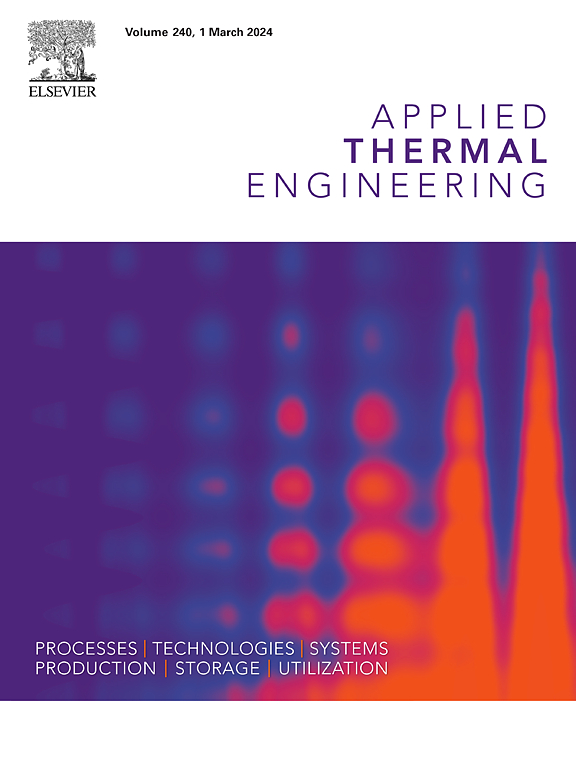A three-dimensional particles-based numerical model for ortho-para hydrogen continuous conversion heat exchangers in hydrogen liquefaction
IF 6.1
2区 工程技术
Q2 ENERGY & FUELS
引用次数: 0
Abstract
Liquid hydrogen (LH2) is a promising hydrogen storage option considering its high energy density and convenience in storage and transportation. Ortho-para hydrogen conversion during hydrogen liquefaction is essential for reducing the boil-off loss of the LH2 product, of which the continuous catalytic conversion is the most energy efficient. However, most existing researches adopted the homogeneous porous media model for the catalysts-filled zones, which is different from the actual layout of catalytic particles. The impact of packed catalytic particles remains unclear and requires further revelation. A three-dimensional particles-based numerical model, considering the geometry and space layout of catalytic particles, is constructed in this work. The impact of packed particles on heat transfer and conversion performance as well as internal physical fields are evaluated. Increasing flowrate ratios enhances convective heat transfer between the fluid and particles slightly and leads to improvements in conversion performance due to greater temperature gradient. Besides, a high Reynolds number enhances heat transfer performance but limits conversion efficiency, even though the conversion heat increases. Both of the concentration and conversion heat distributions are influenced by the inlet concentration of para-hydrogen. When the inlet composition deviates significantly from the equilibrium state, a substantial heat load is concentrated near the entrance, reaching 1.56 × 106 W/m3 within the 80 K to 70 K range. A uniform concentration distribution along the flow directions is observed. In contrast, when the inlet composition is closer to equilibrium, the heat load is significantly lower and is expected to be released further downstream in the channels and the concentration exhibits a parabolic distribution. The work offers a new simulation method for ortho–para hydrogen continuous conversion heat exchangers, which would be useful for studying more detailed information at the particle pore scale.
求助全文
约1分钟内获得全文
求助全文
来源期刊

Applied Thermal Engineering
工程技术-工程:机械
CiteScore
11.30
自引率
15.60%
发文量
1474
审稿时长
57 days
期刊介绍:
Applied Thermal Engineering disseminates novel research related to the design, development and demonstration of components, devices, equipment, technologies and systems involving thermal processes for the production, storage, utilization and conservation of energy, with a focus on engineering application.
The journal publishes high-quality and high-impact Original Research Articles, Review Articles, Short Communications and Letters to the Editor on cutting-edge innovations in research, and recent advances or issues of interest to the thermal engineering community.
 求助内容:
求助内容: 应助结果提醒方式:
应助结果提醒方式:


